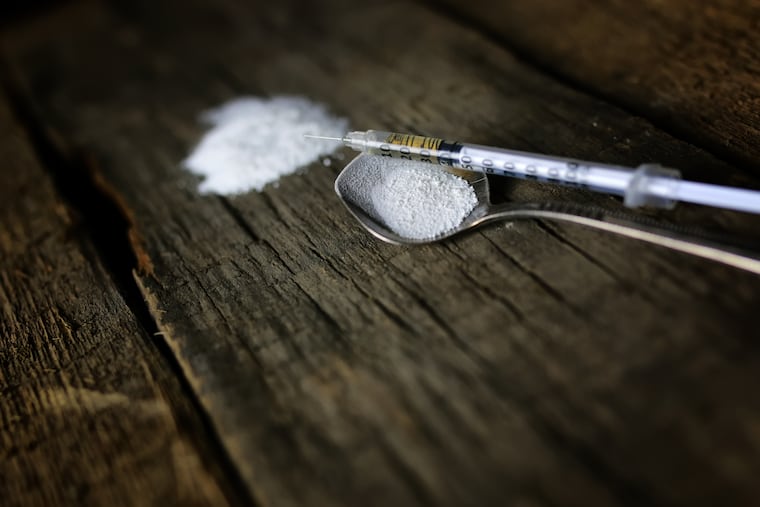The crystal meth crisis: Addiction in America goes beyond opioids | Opinion
The development of America's opioid addiction and the havoc it wreaks on our lives and communities mimics the meth crisis just a few decades earlier.

I struggle with opioids – not the addiction, but rather America's reaction to this addiction. I struggle with it because – like so many patterns in American history, today's opioid crisis harkens back to other pharmaceutically and financially induced addictions of the past, including methamphetamine, which many of us know as "crystal meth."
While we often hear about the opioid crisis infiltrating middle-class America, we must not forget that crystal meth continues to ravage our minority communities, further perpetuating health and economic burdens.
Throughout the first half of the 20th century, methamphetamine, sold as Desoxyn or Methedrine, was widely prescribed as a treatment for depression, lethargy, and obesity. The drug was freely and loosely approved for a wide array of Americans – from homemakers seeking to manage the seemingly insurmountable demands of their familial obligations, to truckers needing to stay awake for long hauls, to overweight Americans trying to shed a few pounds. This powerful stimulant provides the right chemistry to keep one energized, alert, and trim. And so prescriptions abounded.
As the detrimental effects of methamphetamine started to materialize, the drug was slowly but surely regulated during the late 1950s and 1960s, with the government outlawing most uses of the drug in 1971. Because it took more than a decade to act, an addicted public turned to illegally manufactured versions of the drug initially cooked and sold by biker groups like the Hells Angels. Nowadays, makeshift meth labs exist throughout the United States despite the government's 2012 efforts to curtail production through the close monitoring of the sales of decongestants containing the drug's active ingredient, pseudoephedrine. (This is why you must show ID when purchasing these products from your local pharmacy.)
If this series of events sounds familiar, it should. The development of America's opioid addiction and the havoc it wreaks on our lives and communities mimic the meth crisis just a few decades earlier. Greater regulation of opioids leaves the drug's producers basically untouched and unaccountable and fails to consider an addicted public, which has resulted in an increased demand for illegally manufactured and stronger versions of opioids such as fentanyl and of heroin.
Unfortunately, as we struggle to manage an opioid-addicted public, we also are confronted with the ongoing addiction to crystal meth.
There is no doubt that the burden created by heroin and other opioids is on the rise.
Between 2010 and 2016, federal prosecutions of heroin rose some 300 percent. At the same time, prosecution of methamphetamine also increased – not as steeply, but in greater numbers – from 5,000 cases in 2010 to 7,000 cases in 2016.
Similarly, seizures of meth and heroin escalated between 2010 and 2014, resulting in some 10,000 kilograms (22,000 pounds) of heroin confiscated in 2014 as compared with some 50,000 kilograms (110,000 pounds) of meth.
And while there has been a sharp increase in fentanyl/fentanyl analogue and heroin deaths, this increase has been accompanied by a sharp rise in meth-related deaths, which increased to 7,542 in 2016 and 10,721 in 2017, tripling from 3,600 deaths in 2013.
It is important to note that many drug users and abusers take more than one type of drug at a time, but among the meth-related deaths reported in 2016, some 3,300 were not associated with the use of heroin and 5,200 were not associated with synthetic narcotics.
Despite very clear statistics pointing to the challenges created by methamphetamine addiction, the drug is not in the national dialogue in the manner that heroin and other opioids are. And the reason for that is simple: The infiltration of opioid addiction into suburban, white, middle-class America – the mainstream America – creates a panic in these communities of privilege and power. Meth, on the other hand, lodges itself in more marginalized populations including the rural poor and urban and minority communities. Meth's chokehold on these communities proliferates cycles of disenfranchisement, poverty, and health issues on an already burdened population.
Research, much of it my own, has documented the impacts of meth on the gay population certainly of little interest to many Americans who hope to "pray gay away." Most recently, our own studies have shown the proliferation of meth into the black gay population, often poor and too often living with HIV. If America doesn't care about gay men, I assure you its racism and adoration of wealth make little time for poor, black, HIV-positive gay men.
Regardless of where and how our political leaders attend to our nation's addictions, be it opioids or meth, the true enemy — capitalism and business — is the beast that fuels these addictions, and goes unchallenged. In the end it is corporate greed that creates the foundation for addiction in our country – whether to opioids or methamphetamine or to the even more insidious state-sanctioned drugs — alcohol and tobacco. Unless we target this very driver of addiction in America, any effort to curtail the addictions after the fact are a Band-Aid to a more complex festering problem. And it leaves America perfectly positioned to create an addiction to another powerful class of drug in the future.
Perry N. Halkitis is dean of the Rutgers School of Public Health at Rutgers Biomedical Health Sciences and director of the Center for Health, Identity, Behavior & Prevention Studies.